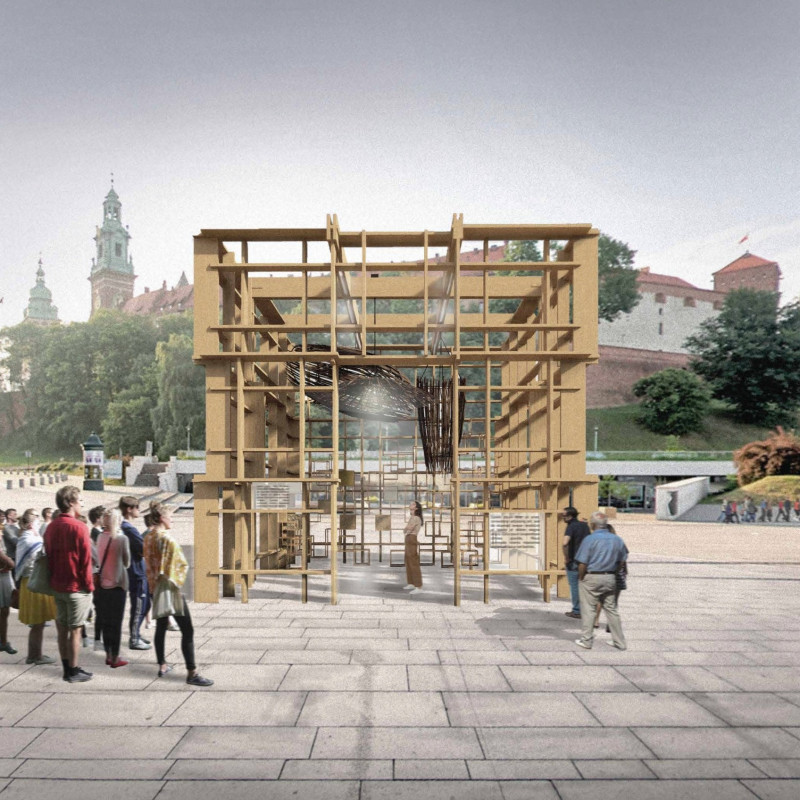5 key facts about this project
The Vernacular Pavilion is a response to ongoing climate change, situated in a way that emphasizes the need for sustainability in building design. It serves as an educational space that promotes eco-friendly construction practices through the use of wood and technologies drawn from traditional architecture. The overall design focuses on modularity, allowing the pavilion to adapt to different environments while encouraging exploration of various sustainable materials and construction methods.
Design Concept
The pavilion features a wooden structure designed with modular elements that offer flexibility in arrangement. Each module can be reconfigured to suit specific site conditions, making it adaptable to diverse settings. This modular approach not only enhances functionality but also engages visitors, inviting them to interact with the design and consider sustainable principles in their own construction choices.
Educational Function
Central to the pavilion's mission is its role as an educational resource. It features exhibition spaces that display various sustainable building materials, offering insights into their properties and applications. Each exhibition box is equipped with descriptions and images that illustrate how these materials can be used in real-world projects. This aspect of the design seeks to inform the public about the benefits of using alternative materials, fostering a greater understanding of sustainable practices in architecture.
Material Considerations
While wood serves as the primary material in the design, the pavilion also incorporates lesser-known sustainable options such as strawbale, hempcrete, and cork. These materials are selected for their contributions to reducing environmental impact and compatibility with local building traditions. Their inclusion underscores the importance of sourcing materials locally, which can support local economies and minimize transportation-related emissions.
The architectural expression of the pavilion blends traditional principles with modern design elements, creating a welcoming space that showcases the potential of sustainable construction methods. The wooden surfaces interact with light, casting interesting shadows that add depth to the experience. Visitors are encouraged to engage not just with the space, but also with the ideas surrounding sustainability and responsible building practices.



















































